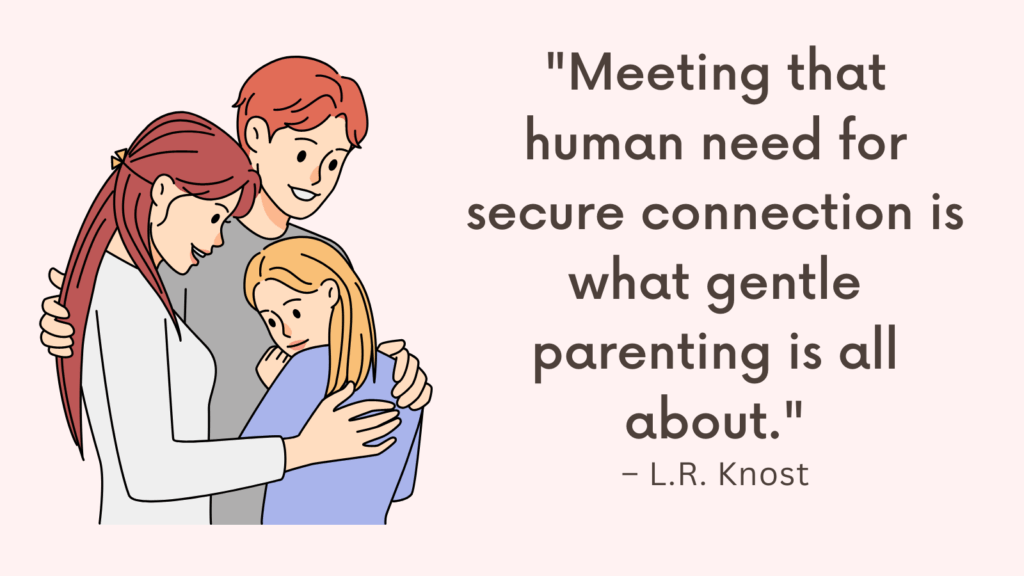This post contains “Does My Child Have Anxiety Quiz”.
Does My Child Have Anxiety Quiz
Results
#1. Does your child often worry excessively about a wide range of everyday situations or activities?
#2. Is your child constantly seeking reassurance or validation from others?
#3. Does your child have difficulty controlling their worries or find it challenging to let go of anxious thoughts?
#4. Does your child frequently feel restless, on edge, or easily fatigued?
#5. Does your child experience muscle tension, headaches, stomachaches, or other physical symptoms related to anxiety?
#6. Does your child have difficulty concentrating, staying focused, or exhibit perfectionistic tendencies?
#7. Does your child tend to overthink or overanalyze situations, often expecting the worst possible outcome?
#8. Does your child avoid certain activities or situations due to fear and worry about potential negative consequences?
#9. Does your child experience sleep disturbances, such as trouble falling asleep or staying asleep?
#10. Does your child show signs of irritability, mood swings, or emotional sensitivity?
We will not sell your information. All results are kept confidential.
This quiz is for informational purposes only. It is not meant as a diagnostic or assessment tool.
Results
The questions above represent common signs of anxiety in children. If you answered yes to most of these questions, then your child may have anxiety.
If you have concerns about your child’s anxiety, it is recommended to seek guidance from a qualified mental health professional who can conduct a comprehensive evaluation and provide appropriate support and treatment.
Related: Best 10 Gentle Parenting Books
Anxiety In Children
The DSM-5, also known as the Diagnostic and Statistical Manual of Mental Disorders, Fifth Edition, is a publication by the American Psychiatric Association (APA).
It serves as a universal guide for diagnosing mental health disorders.
The DSM-5 outlines several anxiety disorders that can be diagnosed in children. Here are some of the commonly diagnosed anxiety disorders and their criteria for children:
1. Separation Anxiety Disorder:
– Excessive fear or anxiety about separation from attachment figures or home.
– Persistent worry about losing attachment figures or harm befalling them.
– Reluctance or refusal to go out or be alone without attachment figures.
– Nightmares about separation or physical symptoms when separation occurs.
2. Generalized Anxiety Disorder (GAD):
– Excessive worry or apprehension about various events or activities.
– Difficulty controlling or stopping worrying.
– Restlessness, fatigue, difficulty concentrating, irritability, muscle tension, or sleep disturbances.
3. Specific Phobias:
– Intense fear or anxiety about a specific object or situation (e.g., animals, heights, injections).
– Immediate fear response when encountering the specific object or situation.
– Avoidance of the feared object or situation or enduring it with intense distress.
4. Social Anxiety Disorder (Social Phobia):
– Fear or anxiety about social situations where there is potential for scrutiny or evaluation.
– Avoidance or endurance with significant distress.
– Fear that they will act in a way that will be negatively evaluated by others.
Please note that these are brief summaries. A qualified mental health professional should conduct a comprehensive assessment to determine if a child meets the specific diagnostic criteria for an anxiety disorder based on the DSM-5 guidelines.
Related: Does My Child Need Counseling Quiz
Causes of Anxiety in Children
There are various factors that can contribute to anxiety in children. Some common causes include:
1. Genetic predisposition
Just like other mental health conditions, anxiety can run in families.
Children may have a higher risk of developing anxiety if a close family member has experienced it.
2. Environmental factors
Stressful or traumatic events can impact a child’s mental well-being.
Examples include divorce, moving to a new school, the loss of a loved one, or witnessing violence.
These experiences can trigger anxiety.
3. Biological factors
Imbalances in brain chemicals (neurotransmitters) such as serotonin and dopamine can contribute to anxiety in children.
Additionally, certain medical conditions or medications can also play a role.
4. Overprotective parenting or excessive pressure
High parental expectations, overprotectiveness, or constantly pushing children to achieve can create a stressful environment, leading to anxiety.
5. School-related stressors
Academic pressure, bullying, difficulty making friends, or fear of failure can all contribute to anxiety in school-aged children.
6. Learning disorders or developmental challenges
Children with learning disorders or developmental challenges may experience anxiety due to their struggles or difficulties in social situations.
7. Media influence
Exposure to unsettling or frightening news events through media or online platforms can also contribute to anxiety in children.
It’s important to remember that anxiety can be caused by a combination of factors, and each child is unique.
Understanding the potential causes can help in providing appropriate support and intervention for children experiencing anxiety.
Related: Does My Child Need Occupational Therapy Quiz
How to Help a Child with Anxiety?
Helping a child with anxiety requires patience, understanding, and support. Here are some suggestions to assist you in supporting a child with anxiety:
1. Encourage open communication
It is essential to offer reassurance and validation to an anxious child.
Letting them know that their feelings are valid and understandable can go a long way in helping them feel understood and supported.
Encourage them to express their emotions and thoughts, and try to avoid disregarding or minimizing their anxiety.
Instead, validate their experiences by using phrases like “I understand that this situation is making you feel anxious, and that’s okay.”
2. Educate yourself and the child about anxiety
This will help both of you understand what anxiety is, how it manifests, and why it occurs.
By gaining knowledge about anxiety, you can better empathize with the child’s experiences and provide appropriate support.
Start by explaining anxiety in simple terms suitable for the child’s age, using relatable examples or stories.
Teach them that anxiety is a normal human emotion, but sometimes it can become overwhelming.
Related: Is My Child Gifted Quiz
3. Establish predictable routines
When helping a child with anxiety, one effective strategy is to establish predictable routines.
Predictable routines provide a sense of stability and security, which can be particularly beneficial for anxious children who often thrive on structure.
Creating daily schedules that include regular mealtimes, bedtimes, and homework sessions can help reduce anxiety by providing a clear framework for the child’s day.
It’s also important to communicate these routines to the child, explaining why they are in place and what to expect.
For example, you could say, “After dinner, we will have half an hour of quiet reading time before getting ready for bed.”
This anticipatory information can help alleviate anxiety by giving the child a sense of control and understanding.
Related: Is My Child Highly Sensitive Quiz
4. Teach relaxation techniques
One effective technique is deep breathing.
Encourage the child to take slow, deep breaths, inhaling through their nose and exhaling through their mouth.
This helps activate the body’s relaxation response and can help calm their nervous system.
Another technique is progressive muscle relaxation, where the child systematically tenses and then relaxes different muscle groups.
This can help release tension and promote a sense of relaxation.
Additionally, guided imagery can be useful, where you guide the child to imagine a peaceful place or scenario, engaging their senses and providing a mental escape from anxious thoughts.
It’s important to be patient and gentle when teaching these techniques, allowing the child to practice at their own pace.
5. Encourage healthy coping strategies
One useful coping strategy is encouraging physical exercise.
Exercise releases endorphins, which are known to reduce anxiety and improve mood.
It could be as simple as going for a bike ride or engaging in a game of tag.
Related: Best 10 Books About HSP (Highly Sensitive Person)
6. Gradual exposure to fears
This technique allows the child to confront their fears in a supportive environment, helping them build resilience and manage their anxiety over time.
When implementing gradual exposure, it’s important to start with small steps that are just slightly outside the child’s comfort zone.
For example, if a child has a fear of dogs, you could begin by looking at pictures of dogs or watching videos of dogs from a safe distance.
As the child becomes more comfortable, you can gradually progress by introducing them to a calm and friendly dog in person, always ensuring they feel safe and supported throughout the process.
An essential aspect of gradual exposure is to encourage the child to express their feelings and emotions openly.
Validating their fears and providing reassurance that they are not alone can be incredibly comforting for a child with anxiety.
Additionally, it’s crucial to celebrate their progress, no matter how small, as this acknowledgment can boost their confidence and motivate them to continue facing their fears.
Related: Best 10 Book Ideas For Kids
7. Seek professional help if needed
If you notice that your child is experiencing persistent and excessive worrying, fears or anxieties that interfere with their daily life, seeking professional help may be necessary.
A qualified mental health professional, such as a psychologist or therapist, can provide the necessary support and guidance to help your child manage their anxiety effectively.
They can conduct assessments to determine the severity of the anxiety and develop personalized treatment plans that may include therapy, counseling, or medication if necessary.
These professionals have the experience and expertise to identify underlying causes and teach coping strategies tailored to your child’s needs.
Remember, every child is unique, so tailor your approach to their specific needs.
Patience, understanding, and consistent support are key in helping a child manage their anxiety effectively.
Can Children Be Diagnosed With Anxiety?
Yes, according to the DSM-5, children can be diagnosed with anxiety disorders.
The criteria for diagnosing anxiety disorders in children are similar to those for adults, but they may be adjusted to account for developmental differences.
The DSM-5 provides specific diagnostic criteria for each anxiety disorder, including age-specific criteria for children.
It’s important to note that a diagnosis of an anxiety disorder should be made by a qualified mental health professional, such as a psychologist or psychiatrist, who has expertise in assessing and treating children.
They will typically conduct a thorough evaluation, which may include interviews with the child and their parents, observation of the child’s behavior, and the use of standardized psychological assessments, to determine if the child meets the criteria for an anxiety disorder.








